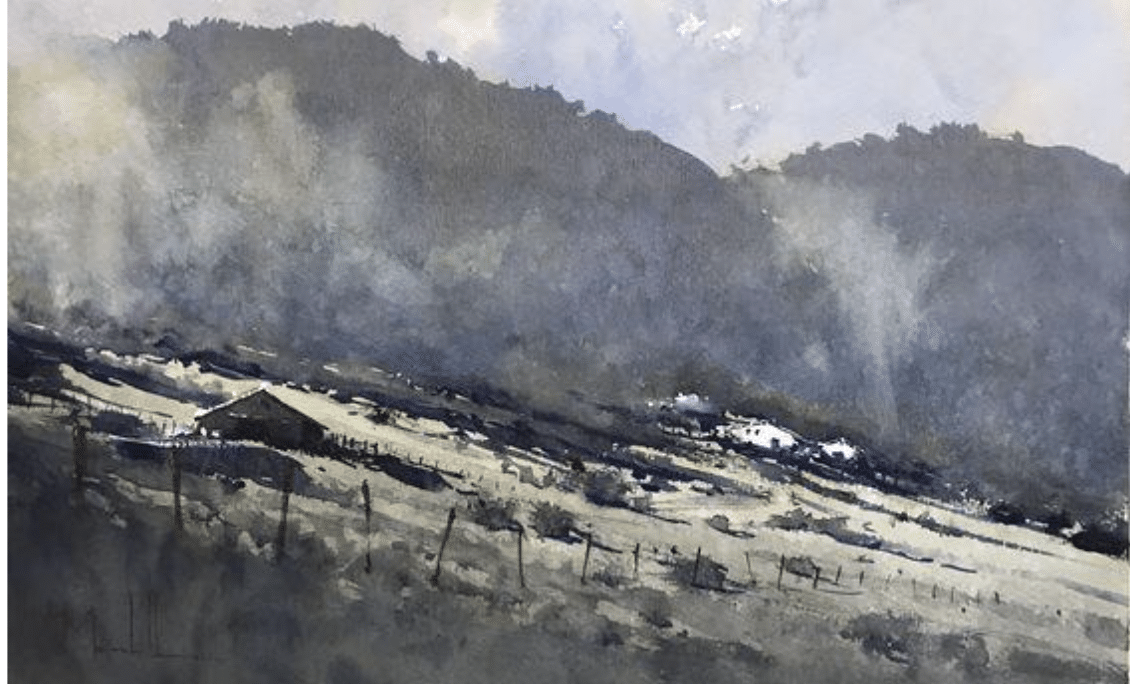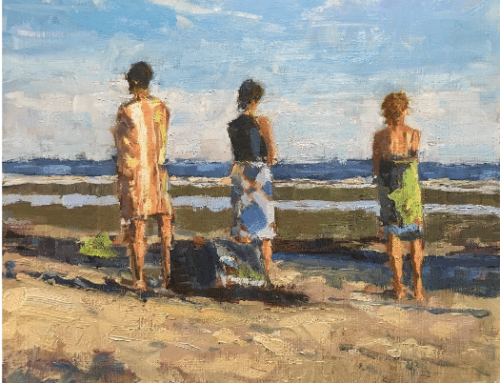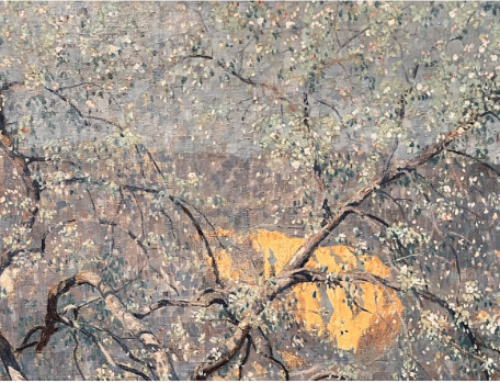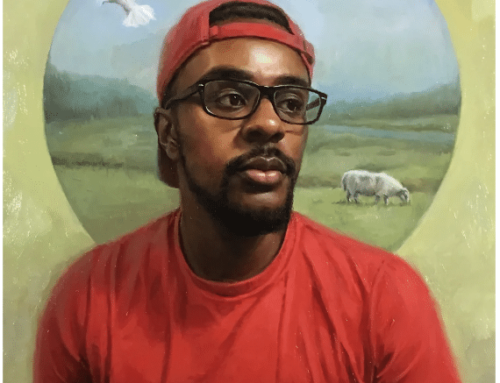Modern artist Henri Matisse didn’t paint en plein air – not in the way we think of it anyway. He did, however, write, “An artist must possess nature.” And this short and sweet sentence holds a world of wisdom for plein air artists.
What does it mean to “possess nature” as Matisse puts it? Perhaps it means an artist must cultivate “the sense of place,” a more or less emotional / spiritual / observational connection to the motif – the bit of field, desert, ocean, forest or whatever one has decided to paint. In this sense it means something akin to “seeing like an artist,” fully connecting and taking it in so as to represent it creatively.
The word “possession” comes from the Latin possess(us) which means “to occupy” and is related to the word for sitting. To be possessed by the muse is to feel oneself to be occupied by a creative power, the artist transformed in turn. To possess your subject matter, then, is to sit with it, to occupy it, to feel it in an emotional or imaginative way.
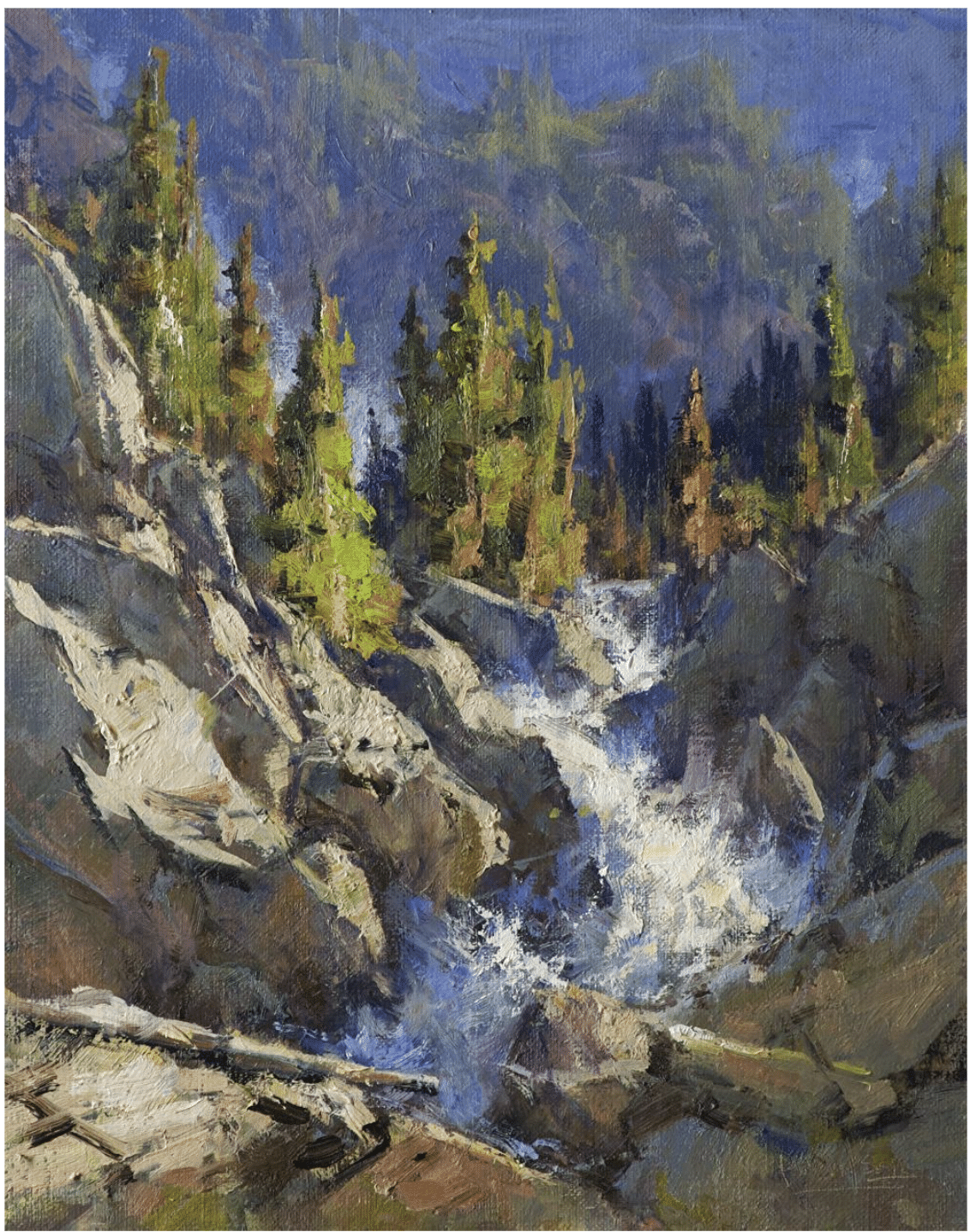
Bill Davidson, Yosemite Waters, oil, 14” x 11”
In other words, the artist must be present with his or her subject in a very special, sympathetic way. Matisse clarified by saying the artist “must identify himself with her (Nature’s) rhythm, by efforts that will prepare the mastery which will later enable him to express himself in his own language.” The full passage suggests that to really “possess” your subject is to know it fully, to see it as if with new eyes, as you’ve never seen it before – not just once but as often as possible.
Creative art opens our eyes. The adventure of painting makes you more sensitive to the visual world, helps you to appreciate what you see in a whole new way, even the things you see on a daily basis.
To put it more simply, as artist Cindy Baron says, painting over the long term can inspire a genuine commitment to “reflect the beauty that is found in nature and take the time to study the colors around you.”
It’s about being fully present, Cindy suggests, alive to what’s around you, to experience beauty wherever it finds you, she says, whether that’s “in a blustering storm or the tranquil air of everyday places.”
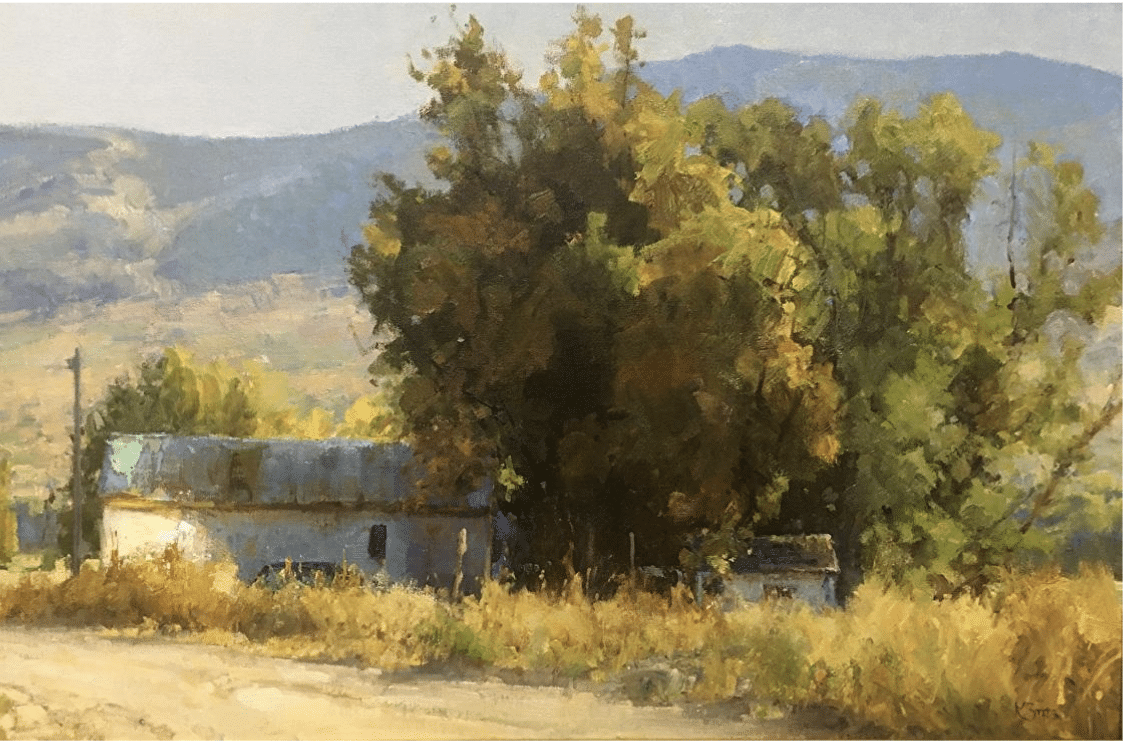
Kathryn Stats, High Country Summer, oil, 20” x 30”
Today’s Inside Art features landscapes by three masters who all have outstanding teaching videos – in order of appearance:
- DAN MARSHALL: PLEIN AIR WATERCOLOR – CAPTURING NATURE
- BILL DAVIDSON: LANDSCAPES REINVENTED, A NEW METHOD FOR PERFECT PAINTINGS
- Kathryn Stats: PAINTING THE EFFECTS OF LIGHT
Asheville Museum Showcasing American Studio Glass Art
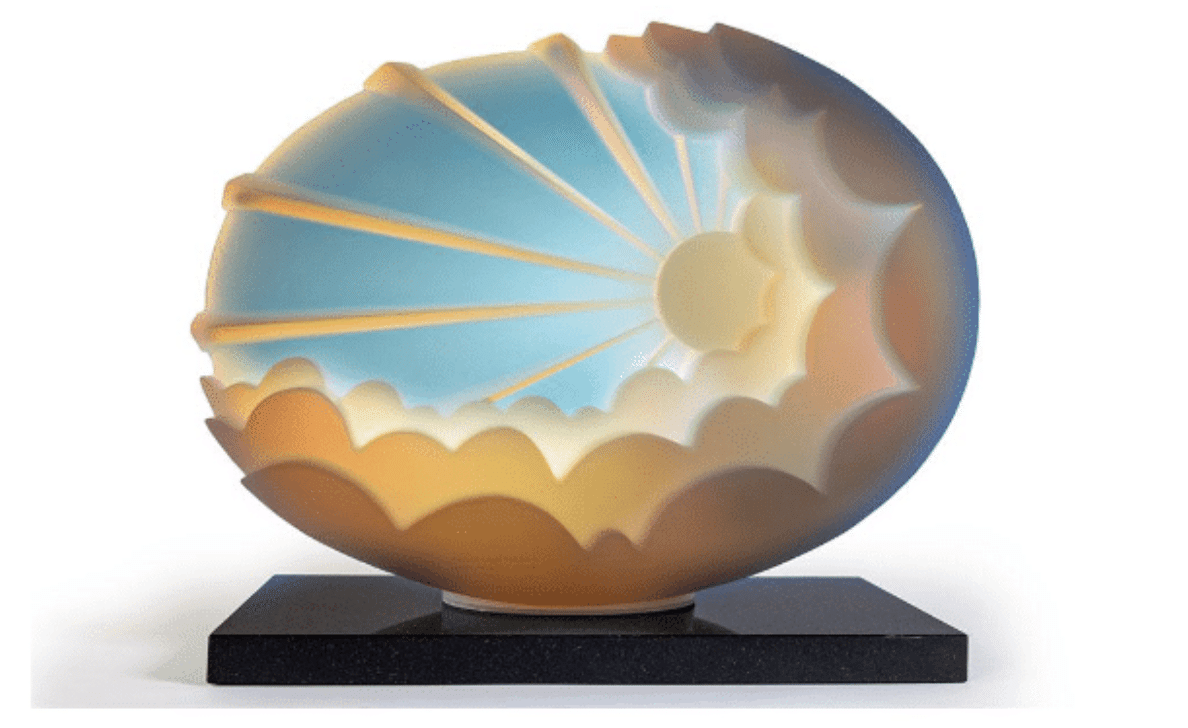
Mark Peiser, Passage Etude Tableau 2, 2013, hot cast phase separated glass on black granite, 17 ½×22×8⅝ inches. Giftfrom the James & Judith Moore Glass and Craft collection, Asheville Art Museum. ©Mark Peiser
ASHEVILLE, NC.- Western North Carolina is important in the history of American glass art. Several artists of the Studio Glass Movement came to the region, including its founder Harvey K. Littleton. Begun in 1962 in Wisconsin, it was a student of Littleton’s that first came to the area in 1965 and set up a glass studio at the Penland School of Craft in Penland, North Carolina.
By 1967, Mark Peiser was the first glass artist resident at the school and taught many notable artists, like Jak Brewer in 1968 and Richard Ritter who came to study in 1971. By 1977, Littleton retired from teaching and moved to nearby Spruce Pine, North Carolina and set up a glass studio at his home.
Since that time, glass artists like Ken Carder, Rick and Valerie Beck, Shane Fero, and Yaffa Sikorsky and Jeff Todd—to name only a few—have flocked to the area to reside, collaborate, and teach, making it a significant place for experimentation and education in glass. The next generation of artists like Hayden Wilson and Alex Bernstein continue to create here.
Exhibitions, including Intersections of American Art, explore glass art in the context of American Art of the 20th and 21st centuries. Themes such as Time & Place, Experiments in Material & Form, and Collaboration & Interdisciplinary Dialogue frame Intersections in American Art. These ideas are the cultural heritage, present, and future of the region and are explored in each gallery. Presenting regional contributions within the context of American art on the national scale, these themes help visitors organize and personalize their Museum experience. A variety of techniques and a willingness to push boundaries of the medium can be seen in this selection of works from the Museum’s Collection.
Established by local artists and incorporated in 1948, the Asheville Art Museum is the third oldest art museum in the state. The Museum has seen several homes over the years, with its current state-of-the-art facility opening in 2019 after a major renovation and expansion project. The Museum is dedicated to collecting American studio glass and within that umbrella, explores the work of Artists connected to Western North Carolina.
Asheville Art Museum/Judith S. Moore Gallery
Western North Carolina Glass: Selections from the Collection
June 28th, 2023–April 15th, 2024

